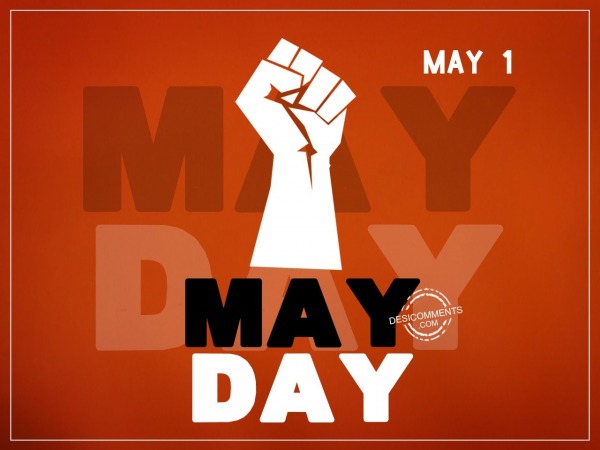TBT: Super Awesome People™ in History.
Although the United States and Canada celebrate Labor/Labour Day on the first Monday in September, most of the world celebrates International Workers’ Day on May 1st, otherwise known as May Day.
In the late 19th century, laborers around the world suffered greatly in low-paying jobs that offered few protections for workers. Even in “developed countries”, there was no eight-hour work day, no HR department or workers’ compensation laws, and few safety regulations. Children were often deprived of education as they worked alongside adults for 10 hours or more a day in dangerous conditions and at sub-minimum wages.

(Source: Desicomments.com) 
(Source: munkaspart.hu)
History of May Day
On May 1, 1886, the Federation of Organized Trades and Labor Unions called for a national strike to secure an eight-hour workday, which laborers had sought for decades. Hundreds of thousands of workers in cities across the United States went on strike. On May 4th, a peaceful worker protest in Chicago’s Haymarket Square was bombed while police who were trying to disperse the protestors. The bombing and ensuing riot resulted in the deaths of seven police officers and at least four civilians and led to a harsh anti-union backlash that slowed the progress of the workers’ movement in the United States.
In 1889, the American Federation of Labor president Samuel Grompers proposed an international demonstration for a universal eight-hour work day. The Second International, an organization of socialist and labor parties, adopted his proposal and chose May 1, 1890, for the demonstration, in part to honor the protests that began on May 1, 1886, and the martyrs of the Haymarket Affair.
The first International Workers’ Day in 1890 was a huge success. Over the next several decades, organized labor movements around the world achieved worker protections. In April of 1919 Spain became the first country in the world to universally establish a maximum eight-hour work day. Mexico’s Constitution of 1917 gave workers the right to organize union and established an eight-hour day and a living wage. France, Poland, Portugal, Germany, Belgium, and Australia were some of the countries to pass eight-hour work days in the late 1910s and 1920s.
U.S. railroad workers achieved an eight-hour day in 1916, but it wasn’t until the Fair Labor Standards Act of 1938 (FLSA) that workers’ rights were established throughout the United States. The FLSA included the creation of a minimum wage, the 40-hour work week, and time-and-a-half pay for employees working more than 40 hours a week. The FLSA also set limits on child labor, as children under sixteen were now prohibited from working in manufacturing and mining (although many continued to work in the agriculture and garment industries).
May Day in 2020
Although the labor movement in U.S. history has fought hard for worker protections, there are many goals they have yet to achieve. Working class wages have stagnated, the minimum wage hasn’t kept up with inflation, and the COVID-19 pandemic has led to new safety concerns for frontline and essential workers as well as increased economic vulnerability for furloughed and laid-off employees and freelancers.
Even in times of pandemic, working people are finding new ways to organize and utilize their power. And on May 1, 2020, employees of Amazon, Whole Foods, Walmart, Fed-Ex, Target, Instacart, and Trader Joe’s are going on strike to demand compensation for unpaid time off, sick leave, hazard pay, and sufficient PPE and cleaning supplies for working during the pandemic. Support their efforts by NOT shopping—online or in person—at any of those businesses. If you need to buy something on May 1, support small businesses and shop locally.